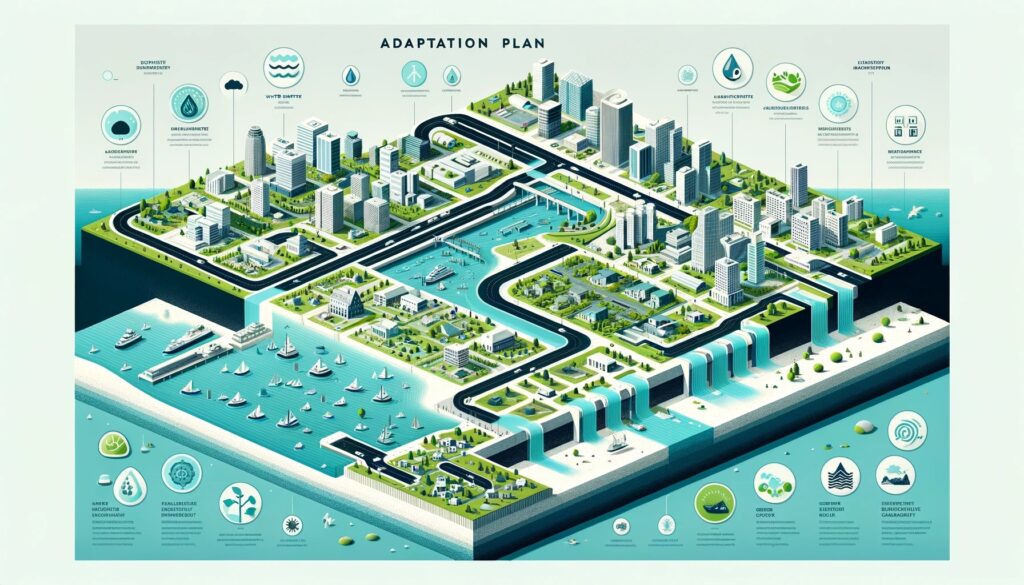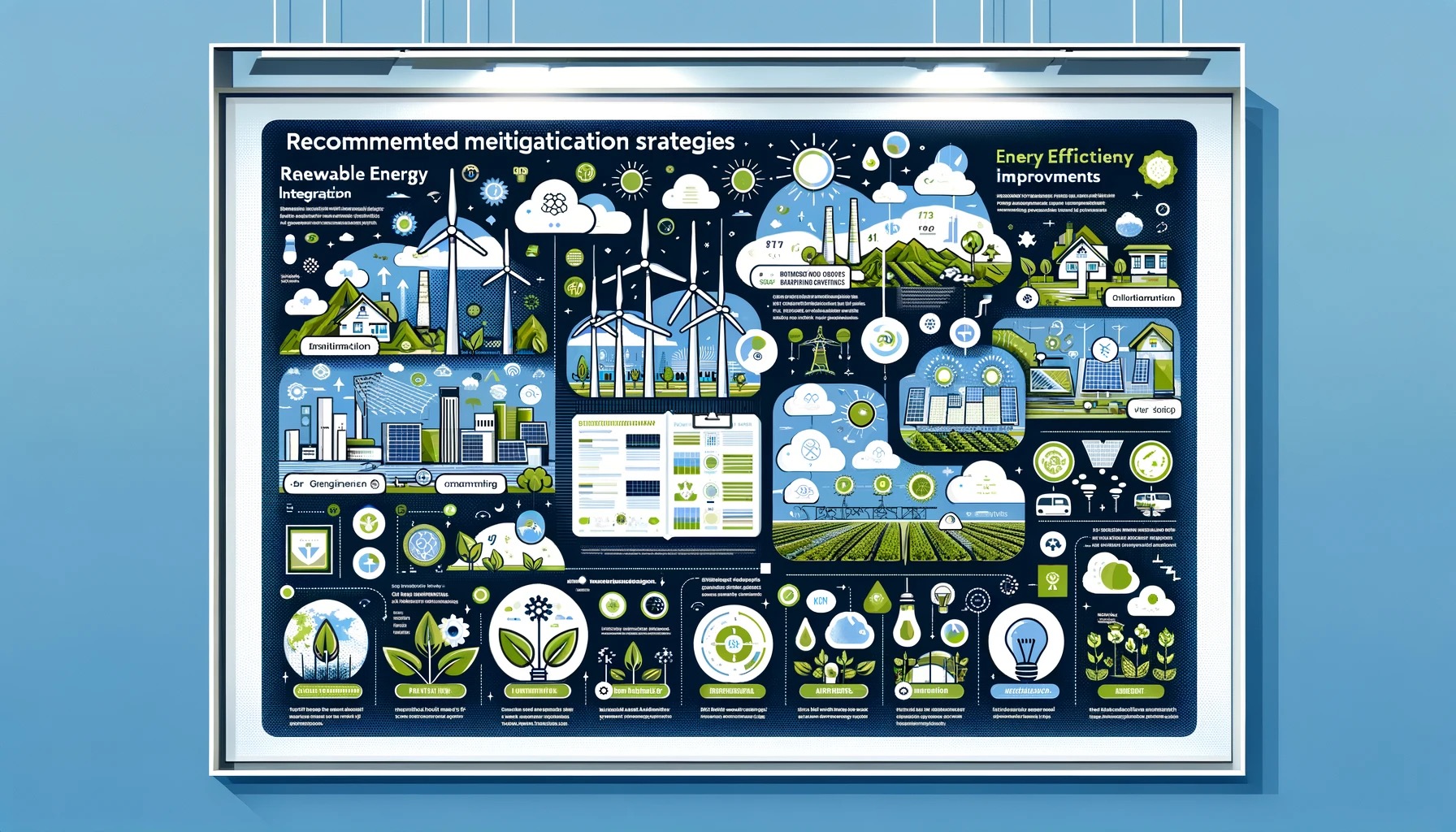Project related to full-time master’s degree International Management, Major of the Master in International Management, Amsterdam and Milan
My Prompt
Objectives:
- Climate Risk Assessment: Utilize AI algorithms to analyze climate data and predict future risks such as extreme weather events, sea-level rise, and temperature changes.
- Mitigation Strategies: Provide customized recommendations for reducing greenhouse gas emissions, optimizing energy use, increasing renewable energy adoption, and promoting sustainable agricultural practices.
- Adaptation Plans: Offer solutions to help communities adapt to climate impacts, including water management systems, resilient infrastructure, and ecosystem conservation.
- Community Engagement: Enable local communities to contribute data and feedback, ensuring that AI models are continuously updated and relevant.
- Educational Tools: Provide resources and tools to educate the public about climate change and sustainable practices.
Image Requirements:
- Climate Risk Assessment Interface: An AI dashboard showing climate risk predictions for a coastal city, highlighting areas at risk of flooding and heatwaves, with interactive maps and graphs.
- Mitigation Strategy Recommendations: An infographic depicting various AI-recommended mitigation strategies such as renewable energy integration, energy efficiency improvements, and sustainable agricultural practices, illustrated with icons and concise descriptions.
- Adaptation Plan Example for a Coastal City: A diagram illustrating an adaptation plan for a coastal city, including water management systems, resilient infrastructure, and green urban spaces, with clear labels and visual elements.
Ai Tools: ChatGPT4, Dall-E
AI-Driven Solutions for Climate Change Adaptation and Mitigation
Climate change is one of the most urgent challenges of our time. This project proposes an innovative platform that uses artificial intelligence to develop personalized solutions for climate change adaptation and mitigation on a global scale.
What is the primary goal of the platform?
The primary goal of the platform is to address the challenges of climate change by providing tailored solutions for both mitigation and adaptation. By leveraging artificial intelligence, the platform aims to reduce greenhouse gas emissions and help communities worldwide adapt to the inevitable impacts of climate change.
How does the platform assess climate risks?
The platform uses advanced AI algorithms to analyze climate data and predict future risks such as extreme weather events, sea-level rise, and temperature changes. This includes integrating data from various sources, such as satellite imagery and local environmental information, to offer accurate and up-to-date risk assessments. The AI dashboard provides a visual representation of these risks, highlighting areas most vulnerable to flooding, heatwaves, and other climate-related hazards.
What types of mitigation strategies does the platform recommend?
The platform provides customized recommendations to reduce carbon footprints. These strategies include optimizing energy use, enhancing renewable energy adoption, and promoting sustainable agricultural practices. For instance, the platform might suggest specific actions like installing solar panels, improving energy efficiency in buildings, or adopting conservation tillage in farming. An infographic on the platform illustrates these strategies with clear icons and concise descriptions.
How does the platform help communities adapt to climate change?
The platform offers tailored adaptation plans that include solutions such as water management systems, resilient infrastructure, and ecosystem conservation. For example, in a coastal city, the platform might recommend constructing sea walls, implementing rainwater harvesting systems, and developing green urban spaces to absorb excess rainfall. A detailed diagram on the platform illustrates these adaptation measures, showing how they work together to increase community resilience to climate impacts.
How does community engagement work on the platform?
The platform encourages local communities to contribute data and feedback. This ensures that the AI models are continuously updated and relevant to the specific needs of different regions. Community members can share observations about local climate conditions, report on the effectiveness of implemented strategies, and suggest improvements. This participatory approach not only enhances the accuracy of the AI’s recommendations but also fosters a sense of ownership and collaboration among community members.

What educational tools does the platform provide?
The platform includes a variety of educational resources and tools designed to raise awareness about climate change and promote sustainable practices. These tools range from interactive tutorials and videos explaining climate science and its impacts to guides on how to implement mitigation and adaptation strategies at the individual and community levels. By providing accessible and engaging content, the platform aims to empower users to take informed action against climate change.
Conclusion
This AI-driven platform represents a groundbreaking step towards creating a more sustainable and resilient future. By offering tailored solutions for climate change adaptation and mitigation, engaging local communities, and providing educational resources, it addresses the urgent need for comprehensive and effective climate action. Through the use of advanced AI technology, the platform not only predicts and mitigates risks but also empowers communities to adapt and thrive in the face of climate change.




A very very interesting project